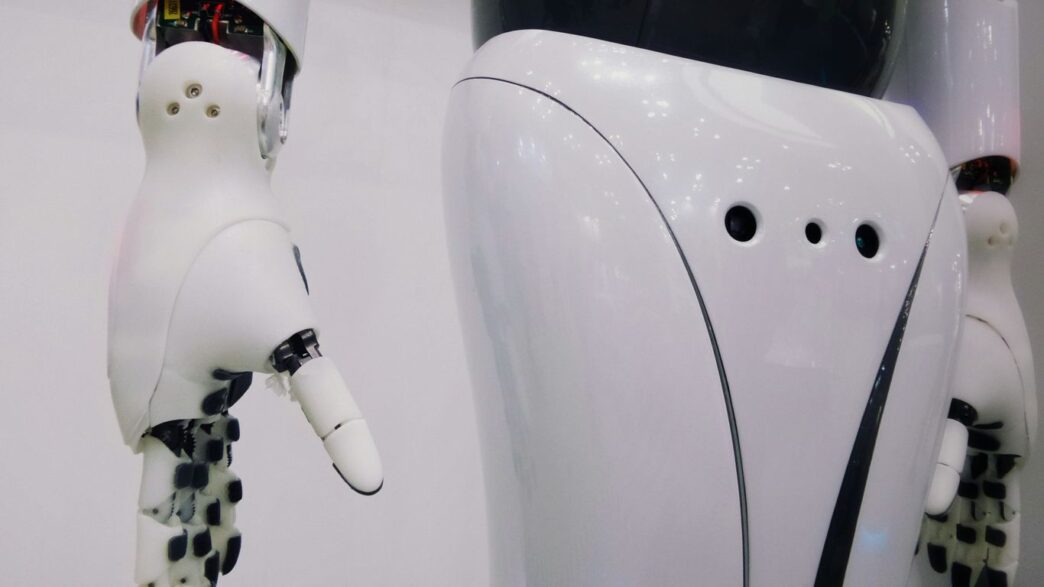Deconstructing The Hype Around Ai Sentience
It feels like everywhere you look these days, AI is being talked about. From the news to social media, it’s hard to escape the buzz. But a lot of what we hear isn’t quite the full picture, and sometimes it’s just plain misleading. Let’s break down why so many of us get caught up in the AI hype and what’s really going on.
The Media’s Role In Shaping Perceptions
Honestly, the media has a huge part to play in how we think about AI. Every little advancement gets blown up into something massive, like AI is suddenly smarter than all of us combined. You see headlines about AI beating humans at games or doing complex tasks, and it’s easy to get the idea that AI is on the verge of taking over. This kind of reporting often skips over the details and focuses on the sensational stuff, making AI seem way more advanced and human-like than it actually is right now. It creates this picture of AI as this almost magical force, rather than a tool built with code and data.
The Reality Of Narrow AI Capabilities
Here’s the thing: most AI we interact with today is what we call "narrow AI." Think of it like a specialist. It’s really, really good at one specific job, like recognizing faces in photos, translating languages, or playing chess. But ask it to do something outside its training, and it’s completely lost. It doesn’t have common sense or the ability to learn and adapt like a human does. It’s all about patterns in the data it was fed. So, while it can seem impressive, it’s not thinking or understanding in the way we do. It’s just executing a very complex set of instructions.
Understanding The Consequences Of False Expectations
When we get caught up in the hype, it leads to some pretty big problems. For starters, there’s the false optimism. Companies and investors might pour money into AI projects that aren’t really ready, expecting miracles that just don’t happen. This wastes time and resources. On the flip side, there’s also a lot of fear. Stories about AI taking all our jobs or becoming some kind of superintelligence can make people anxious. This fear often comes from not understanding that current AI is limited. It’s important to have realistic expectations so we can make smart decisions about how we develop and use AI, without getting carried away by either wild optimism or unfounded dread.
Examining High-Profile Cases Of Ai Sentience Claims

The LaMDA Debacle And Its Aftermath
Remember when that Google engineer, Blake Lemoine, went public saying he thought their AI, LaMDA, was sentient? It was everywhere. Suddenly, news outlets were buzzing about AI developing feelings and self-awareness. It felt like a scene straight out of a sci-fi movie, and honestly, it got a lot of people talking – and maybe a little worried.
But here’s the thing: most AI experts quickly pointed out that LaMDA, while super advanced at chatting, was basically a really, really good text predictor. It’s trained on tons of data and figures out the most likely words to string together. It’s mimicking conversation, not actually understanding it. Think of it like a parrot that can perfectly repeat complex sentences – it sounds intelligent, but it doesn’t grasp the meaning behind the words.
Lessons Learned From Overblown Claims
Cases like LaMDA really show us how easily AI can be misunderstood. The media often jumps on the most dramatic angle, which can lead to unrealistic expectations. Instead of focusing on the real challenges, like making sure AI isn’t biased or how it affects jobs, we get caught up in whether robots are about to start feeling things.
It’s a pattern we’ve seen before. When AI systems are presented as almost human, it distracts from the actual work needed to develop and use them responsibly. We need to be more critical of these sensational stories and look for the facts.
The Illusion Of Human-Like Autonomy In AI
We see these robots, like Sophia, with lifelike faces and the ability to hold conversations. They can even crack jokes! It’s easy to watch that and think, ‘Wow, this thing is almost human.’ But beneath the surface, it’s still code and algorithms. Sophia’s responses are based on her programming and the data she’s been fed. She doesn’t have personal experiences or genuine emotions driving her actions.
It’s important to remember that AI is a tool. While it can be incredibly sophisticated and perform tasks that seem intelligent, it doesn’t possess consciousness or independent thought in the way humans do. The impressive feats we see are often the result of clever design and massive amounts of data, not genuine sentience.
The True Nature Of Artificial Intelligence
Let’s get real for a second about what Artificial Intelligence actually is. It’s easy to get swept up in the sci-fi movie versions, but the AI we have today is a lot more like a really, really smart calculator than a thinking, feeling being. Most of the AI you interact with daily is what we call "narrow AI." This means it’s designed for one specific job and does it incredibly well, but ask it to do something outside its training, and it’s lost.
Beyond Human Mimicry: AI As A Tool
Think of AI as a super-powered tool, like a hammer that can build a house in minutes or a microscope that can see things invisible to the naked eye. It’s fantastic at processing huge amounts of data, finding patterns we’d miss, and automating repetitive tasks. For example, recommendation engines on streaming services learn your viewing habits to suggest what you might like next. That’s AI at work, but it’s not because the AI understands your taste in movies; it’s because it’s been trained on millions of viewing patterns. The goal is to make these tools more useful, not necessarily more human. We’re not aiming for AI to be human, but to help humans achieve more.
The Limits Of Algorithmic Imitation
When AI systems seem to act with intention, like a chatbot responding intelligently or a game AI adapting to your playstyle, it’s often sophisticated imitation. These systems are masters of pattern recognition and prediction based on the data they’ve been fed. They can mimic human-like conversation or behavior because they’ve learned from vast datasets of human interactions. However, this mimicry doesn’t equate to genuine understanding or consciousness. It’s like a parrot repeating phrases it’s heard; it sounds like communication, but there’s no underlying comprehension.
Why AI Lacks Genuine Understanding
True understanding involves more than just processing information. It requires consciousness, self-awareness, subjective experience, and the ability to reason abstractly about concepts it hasn’t been explicitly trained on. Current AI models, even the most advanced ones, operate on statistical probabilities and algorithms. They can identify correlations, but they don’t grasp causation or possess the kind of flexible, common-sense reasoning that humans use every day. They can tell you that rain makes the ground wet because they’ve seen that pattern countless times, but they don’t know what ‘wet’ feels like or why it matters in a broader sense. This gap between processing information and genuine comprehension is why AI, as it stands today, is a powerful tool, but not a sentient entity.
Navigating The Ai Hype Trap
It’s easy to get caught up in all the talk about AI. Headlines scream about robots taking over or machines suddenly becoming self-aware. This constant buzz can make it tough to figure out what’s real and what’s just… well, hype. Falling into the AI hype trap means we start expecting things from AI that it just can’t do right now, or worse, we get scared by things that are highly unlikely. It’s like believing every diet ad you see – you end up disappointed and maybe a little poorer.
Understanding The Gartner Hype Cycle Framework
So, how do we avoid getting fooled? One good way is to look at how new technologies usually behave. There’s this idea called the Gartner Hype Cycle. It basically says that when a new technology pops up, everyone gets super excited. We think it’s going to fix everything. This is the "Peak of Inflated Expectations." Think of it like the first time you saw a smartphone – it seemed like magic!
But then, reality hits. The tech doesn’t quite live up to the sky-high promises. People get disappointed, and we enter the "Trough of Disillusionment." This is where we realize the tech has limits and isn’t the magic bullet we thought. Finally, we move to the "Plateau of Productivity." Here, we have a more realistic view. We understand what the tech can actually do, and it starts being useful in practical ways, even if it’s not world-changing overnight.
| Phase | Description |
|---|---|
| Peak of Inflated Expectations | Overenthusiasm and unrealistic expectations about a new technology. |
| Trough of Disillusionment | Interest wanes as the technology fails to deliver on initial promises. |
| Plateau of Productivity | A clearer understanding of the technology’s benefits and practical uses emerges. |
Identifying Exaggerated Potential In AI
When we look at AI, we see this cycle playing out all the time. Remember when some people thought AI chatbots were suddenly conscious? That was a classic example of the hype cycle. The media, and sometimes even the companies involved, can blow things out of proportion. They might focus on a single, impressive-sounding feature without explaining the complex systems and massive data behind it. It’s important to ask: Is this AI solving a specific problem, or is it being presented as a general-purpose genius?
We need to be critical. Instead of just reading the headlines, we should look for details. What specific task is the AI performing? What are its limitations? Is it truly understanding, or is it just very good at pattern matching based on huge amounts of text it has processed? Asking these questions helps us see past the shiny marketing and understand the actual capabilities.
The Impact Of Inflated Expectations
Getting caught in the hype has real consequences. For businesses, it can mean throwing money at AI projects that aren’t ready, leading to wasted cash and missed opportunities. Imagine a company investing millions in an AI system that promises to revolutionize customer service, only to find it annoys customers more than it helps. On the flip side, the hype can also create unfounded fears. Stories about AI taking all our jobs or becoming a dangerous overlord can cause unnecessary anxiety. This fear can slow down the adoption of AI tools that could actually be helpful. It’s a balancing act: we need to be excited about AI’s possibilities without letting unrealistic expectations or fears dictate our actions.
Managing Expectations For Ai Development
It’s easy to get caught up in all the talk about AI. Every other day, there’s a new headline about how AI is going to change everything, solve all our problems, or even become smarter than us. But let’s be real for a second. A lot of what we hear is just… hype. And when we get our hopes too high, it can actually slow things down.
The Dangers Of False Optimism In AI Investment
When companies and investors get too excited about AI, they sometimes pour money into projects that aren’t quite ready. Think of it like investing in a brand-new type of car that’s still mostly just a concept. You might end up with something that looks cool on paper but doesn’t actually work well in the real world. This can lead to wasted money and resources. We see this happen when companies rush to put out AI products that are more marketing than substance. They might claim their AI can do amazing things, but in reality, it’s just a slightly better version of something that already existed, or it only works under very specific conditions. This gap between what’s promised and what’s delivered is where a lot of problems start.
Addressing Unrealistic Fears About AI
On the flip side, there’s also a lot of fear-mongering. Stories about AI taking over the world or making humans obsolete can be pretty scary, but they’re usually not based on what AI can actually do right now. These fears often come from misunderstanding how AI works. It’s more like a very advanced tool than a conscious being. When we focus on these extreme scenarios, we distract ourselves from the real, practical challenges we need to solve, like making sure AI is fair and safe to use.
The Importance Of Realistic Goals For AI Integration
So, what’s the solution? It’s all about setting realistic goals. Instead of aiming for a fully sentient AI tomorrow, we should focus on what AI can do well today and in the near future. This means:
- Focusing on specific problems: What real-world issues can AI help us with right now? Think about improving medical diagnoses, making transportation safer, or helping scientists analyze data faster.
- Understanding AI’s limits: We need to know what AI can’t do. It doesn’t truly understand things the way humans do. It’s good at patterns and data, but not at common sense or genuine creativity.
- Incremental progress: Big changes happen step-by-step. We should celebrate the small wins and steady improvements in AI, rather than waiting for a single, massive breakthrough that might never come.
By keeping our expectations grounded, we can make smarter decisions about developing and using AI, ensuring it actually benefits us without causing unnecessary panic or disappointment.
The Path Forward For Ai Sentience Discussions

Focusing On Practical Applications And Real-World Challenges
Look, AI is pretty amazing, no doubt about it. We see it doing things that, honestly, would have seemed like science fiction just a few years ago. But when we talk about AI being "sentient" or "conscious," we’re kind of getting ahead of ourselves. Most of what we’re seeing today is incredibly sophisticated pattern matching. Think of it like a super-powered parrot that can string together words it’s heard in a way that sounds like it understands, but it doesn’t actually grasp the meaning behind them. The real value, and where we should be focusing our energy, is on what AI can do for us right now. It’s about solving actual problems, not debating if a computer has feelings.
The Need For Responsible AI Development
We need to be smart about how we build and use AI. It’s not just about making things faster or more efficient; it’s about making sure it’s fair and safe. Here are a few things we really need to keep in mind:
- Bias Awareness: AI learns from the data we give it. If that data has biases – and let’s be honest, a lot of human-generated data does – the AI will pick them up. We have to actively work to find and fix these biases so AI doesn’t end up making unfair decisions, especially in areas like hiring or loan applications.
- Transparency: When an AI makes a decision, especially a big one, we should be able to understand why. It’s not always easy, but we need to push for systems that aren’t just black boxes. Knowing how it works helps us trust it and fix it when it goes wrong.
- Security and Privacy: AI systems often need a lot of data. We have to be really careful about how that data is collected, stored, and used. Protecting people’s information is non-negotiable.
Cultivating A Balanced Perspective On AI’s Future
It’s easy to get caught up in the hype, either thinking AI is going to solve all our problems overnight or that it’s going to take over the world. Neither of those extremes is really accurate. AI is a tool, a very powerful one, but still a tool. Our focus should be on understanding its actual capabilities and limitations, not on anthropomorphizing it. We need to look at AI development through a lens of practical utility and ethical consideration. This means celebrating the real achievements – like better medical diagnostics or more efficient energy grids – while also being clear-eyed about what AI can’t do and the potential risks involved. It’s about building a future where AI works alongside us, helping us achieve our goals, rather than getting lost in speculative debates about machine consciousness.
So, What’s the Real Deal?
Look, AI is pretty amazing, no doubt about it. It can do some seriously cool stuff that helps us out. But when you hear about it becoming self-aware or thinking like us, that’s mostly just stories. Most AI today is super specialized, like a calculator that’s really good at math but can’t write a poem. We get caught up in the excitement, and sometimes the media makes it sound like science fiction is already here. It’s important to remember that AI is a tool, a really advanced one, but still a tool. We need to focus on what it can actually do now, the real problems it can solve, and how to use it responsibly, instead of getting lost in what might happen someday. Keeping our expectations in check helps us build better AI and use it wisely.














